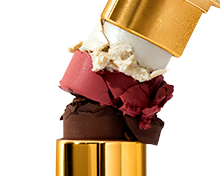Why Jojoba Oil Skincare Is Everywhere This Year

There are skincare ingredients with star power — think: the headline-grabbing allure of acids, the seemingly endless ways to use coconut oil — and then there are skincare ingredients with staying power. Jojoba oil sits comfortably in the latter category. It’s never really been able to generate the buzz it deserves, despite being a staple in skincare formulations since the 1970s. But considering the fact that jojoba oil is in so many new skincare releases (from the latest Chanel oil to your local herbalist’s homemade elixir), it’s high time for the ingredient to step into the spotlight.
Jojoba oil — pronounced ho-HO-ba, by the way — actually got its start in 1971 as an eco-friendly alternative to sperm oil, a prevalent cosmetic ingredient at the time that was sourced directly from the bodies of whales. (So, uh, not cruelty-free or vegan.) “At the industry’s peak, more than 70,000 whales were captured every year, threatening the very existence of the species,” Amber Schwartz, the Technical Director at Vantage, a company that farms and manufactures jojoba oil, tells The Zoe Report. “The extreme depletion triggered several countries to ban commercial whaling and the use of its derived products, leaving many industries with no alternative for the precious oil.” Entrepreneurs began looking for a sustainable substitute and found it in the seeds of a wild shrub native to Southern California: jojoba.
“Not only are jojoba seeds extremely rich in oil — ten grams of seed yields five grams of oil, a ratio that makes it one of the most efficient oil-producing crops — but the plants can grow on previously untillable, arid lands, and in territories where they even provide work opportunities to Native American communities,” Schwartz explains. Sure, the accessibility, efficiency, and economic opportunity that jojoba oil presents are all great. But what really makes this oil stand out from the rest is its chemical makeup.
Jojoba oil is biomimetic, which means it closely resembles human sebum, aka, the oil your skin naturally produces. In fact, jojoba oil and sebum are a 97 percent chemical match. (It should be noted that jojoba is not technically an oil, but a “liquid wax ester,” just like sebum — but “jojoba liquid wax ester” just doesn’t have the same ring to it, right?) “It is very similar to normal skin oils,” Dr. Devika Icecreamwala, a dermatologist with Icecreamwala Dermatology in San Francisco, tells TZR. What that means for your skincare routine is that jojoba essentially helps regulate natural oil production to leave your face perfectly moisturized. It doesn’t matter if your skin usually tends toward oiliness or dryness, either — jojoba balances oil levels either way.
“Our skin needs its sebum, because it’s a natural protection,” Schwartz explains. “If the skin doesn’t detect any sebum [on the surface], it will keep producing it until it’s replenished.” Applying jojoba directly onto oily skin sends a sort of “signal” to the sebaceous glands, letting them know they can stop producing so much extra oil. “And because of its structure, jojoba oil will create a perfect protecting and moisturizing layer on top of dry skin,” Schwartz says. “The same logic applies to hair, which is also naturally conditioned by human sebum.”
It seems too good to be true — a face oil that transforms both oily skin and dry skin? — but Dr. Icecreamwala confirms it. “Jojoba oil balances oil production in all skin types,” she tells TZR. “It minimizes oil production in oily skin so not to cause acne, and is also very hydrating for dry skin without leaving your pores clogged.” This function stands in contrast to some of the more comedogenic oils on the market, like coconut oil, which your pores can’t immediately recognize.
“Moreover, jojoba oil is an antioxidant that effectively fights and eliminates free radicals, to ultimately slow the aging process,” Schwartz says, while Dr. Icecreamwala adds that the substance contains vitamins B and E to support overall skin health.
The ingredient’s unique chemical structure also makes it an ideal companion for pretty much every other beauty ingredient in existence… hence, why it’s in so many of your favorite products. “Our studies show that when we mix jojoba oil with other oils, like avocado oil, we improve the stability of the overall formulation,” Schwartz explains; leading to a longer shelf life. And because of its proximity to sebum, jojoba helps heavier ingredients sink into the skin like that. “Applying almond oil might be quite greasy,” the jojoba expert tells TZR, “but when mixed with jojoba, the blend of oils will absorb faster and leave a comfortable, powdery after-feel.” I mean, that’s just typical jojoba oil — always supporting other oils and letting them get all the glory. Let’s just take a minute for some jojoba appreciation, OK? It’s eco-friendly! It’s naturally abundant! It creates jobs for marginalized communities! It’s a literal skin savior! Want to get in on the jojoba oil action? The 19 products ahead — including cleansers, moisturizers, masks, and more — are a good place to start.

